Huawei’s introduction of the P20 and P20 Pro last month in Paris, France saw a huge positive response from consumers. For the first time in a long time, Huawei is seen as a strong global competitor that’s able to match the innovations brought upon by the likes of Apple and Samsung.
The Huawei P20 and P20 Pro are a testament to this (you can also read our Huawei P20 Pro review here).

The P20’s modern yet onique design stands out from the rest, its internal hardware as powerful as it is beautiful in the outside. Check out our full review of the Huawei P20 below.
Table of Contents
Just like the previous P10, the Huawei P20 has that familiar look and a distinct Huawei signature. It’s slightly bigger and heavier but for almost the same chassis size, the display size has significantly increased from 5.1 inches to 5.8 inches. That’s even bigger than the 5.5-inch display of the P10 Plus.
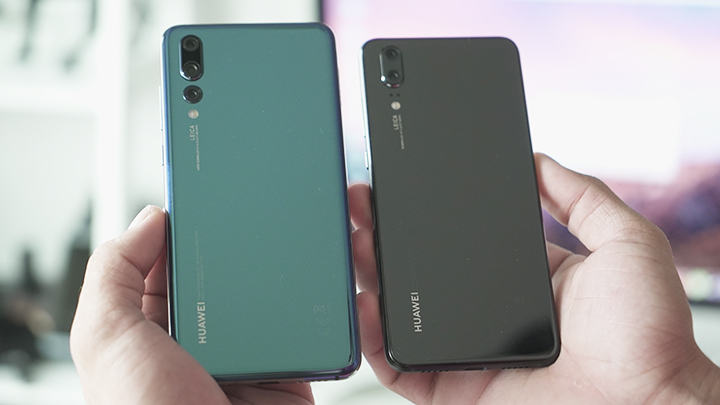
All these were achieved, including retaining the fingerprint sensor up front, by shaving off the bezels on all sides. The fingerprint sensor is way down at the bottom though and a bit harder to reach when holding it with one hand.

The power button and volume controls are on the right side, the SIM card slot is on the left. The noise-canceling mic is up top while the USB Type-C charging port, primary mic, and speaker grille are at the bottom end. The antenna bands cut across the top and bottom end with a subtle shade of black to make it look almost invisible.

The back panel is flat with a glass layer on top although there is no mention of Gorilla Glass protection. The dual camera module is flushed near the top left corner with some sensors just below them as well as the dual-tone, dual-LED flash.
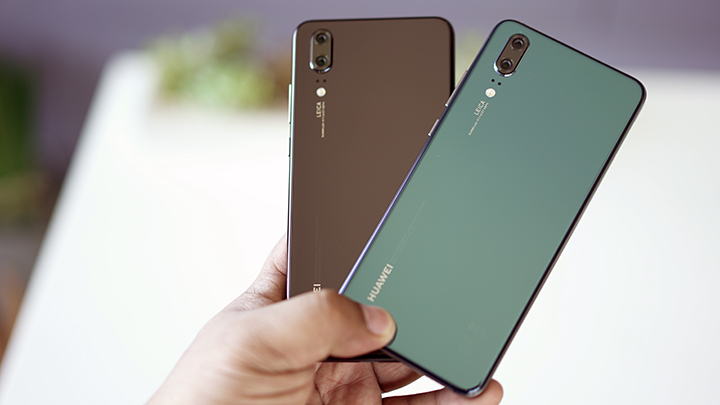
The new Huawei logo is flushed just at the bottom end together with several labels and required markings. Also interesting to note that the layout of the entire back panel is set horizontally instead vertically, giving more attention to the dual-camera system.

It’s a bit of disappointing that the P20 is still not IP67 water-resistant, unlike its bigger sibling (P20 Pro), although the IP53 splash-resistant is present. For a flagship smartphone, this feature should be a standard.

It’s apparent Huawei wants to make a statement that they can do better and implement design executions to significantly differentiate themselves from the competition. Well, except for that unnecessary notch on the display, we think that Huawei has finally found its design DNA in the P20 series.
The P20 now has a bigger display at 5.8 inches from the 5.1 inches in the P10. This huge jump in screen real estate is the result of shaving off a lot of excess bezels on all sides. That’s the same effect we saw when Samsung shifted to the Infinity Display of the Galaxy S8 (5.8-inches) from the Galaxy S7 (5.1 inches).

Huawei used the same IPS LCD panel with 3D curved glass along the edges and glass layer both at the front and in the back.
The P20 retains the same full HD+ resolution as its bigger sibling. At 2244×1080 pixels, you get a nice 429ppi pixel density. The display is bright and crisp, colors are balanced, whites are warmer and over-all screen clarity is spot on. The odd aspect ratio (18.7:9) is a bit of a concern since the screen will certainly crop out along the sides when viewing videos.

Then, there’s also the notch that might be a concern until you realize you can actually hide it in the Settings as if it’s just a line of display for the notification and status.
The P20 follows the same Leica dual-camera setup as its predecessor, the P10 — a 12MP RGB sensor with f/1.8 aperture and a 20MP sensor with f/1.6 aperture. The RGB sensor takes color information and combines it with the detailed photo and higher contrast produced from the monochrome sensor.

This is almost the same setup with the Huawei P10, only that the sensors have been slightly upgraded, specifically the aperture opening which means better low-light performance.
The front-facing camera is now 24MP from a measly 8MP from the P10 but the f/1,9 aperture is now down to just f/2.0 on the P20. Here are some sample selfies with the front camera.
The rear camera can shoot 2K at 30fps or just 1080p up to 60fps. The slow-mo feature can capture up to 960 frames per second at 720p. There’s also 2x lossless zoom which is the same in the previous model and not as impressive as the 5x on the P20 Pro.

Unlike the P20 Pro, there’s just incremental upgrade to the twin camera system of the P20 when compared to its direct predecessor. Nevertheless, the quality of the photos are great, crisp and detailed and the colors are spot on.
The device comes with Android 8.1 Oreo right out of the box and customized with EMUI 8.1.
The default layout of EMUI is a flat home screen with all the apps scattered across multiple home screens. To organize, you can just group the icons into folders. If you want the default layout with an app drawer, that can be easily done in the Settings.
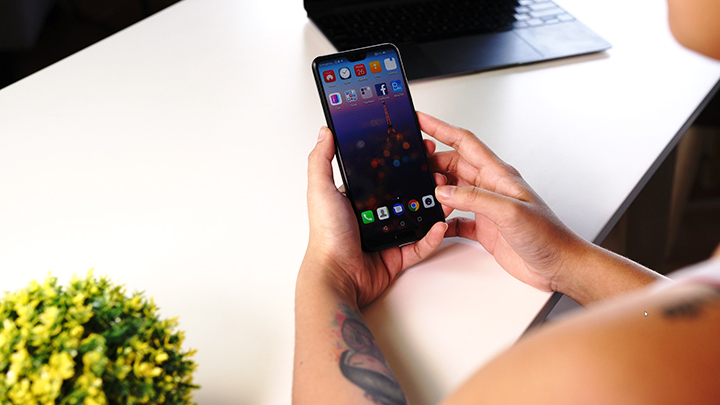
EMUI is such a simple and clean interface. Too simple, in fact, that we have not really seen any cosmetic difference compared to previous versions, all the way to EMUI 5.0.
EMUI 8.1 comes with options for a floating navigation dock, Smart Split screen to allow 2 apps sharing a single screen, and Smart Multi-Column Display for certain apps when oriented horizontally.
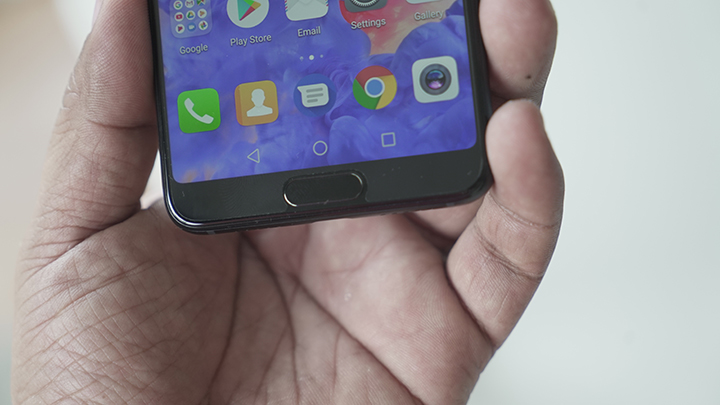
For navigation, you can choose from 3 options – an Off-Screen navigation button that relies on the fingerprint as some sort of trackpad; an On-Screen Navigation Key that floats just below the last row of icons/apps; or a Virtual Navigation Bar that’s normally found in Android navigations. Just pick one which you’re most comfortable with and stick with it to avoid confusion.
Thankfully, there are not a lot of 3rd-party apps included in the system and only less than 9GB of space is used by the firmware.

With EMUI 8.1 Huawei also introduced a new Face Recognition feature to quickly unlock your phone. Suffice it to say, face unlock is very fast in daylight or well–lit environments but tends to slow down to about 1 to 2 seconds in low-light scenarios. You have to option to automatically unlock the screen upon recognition or add a slide-up action on the screen first, just like in the iPhone X.
The fingerprint sensor is also convenient and more secure although we’re still not sold to the fact that it was placed at the front and not the back. You can register up to 5 unique fingerprints and even use a different fingerprint to separate your MainSpace and your Private Space (secondary, private home screen).
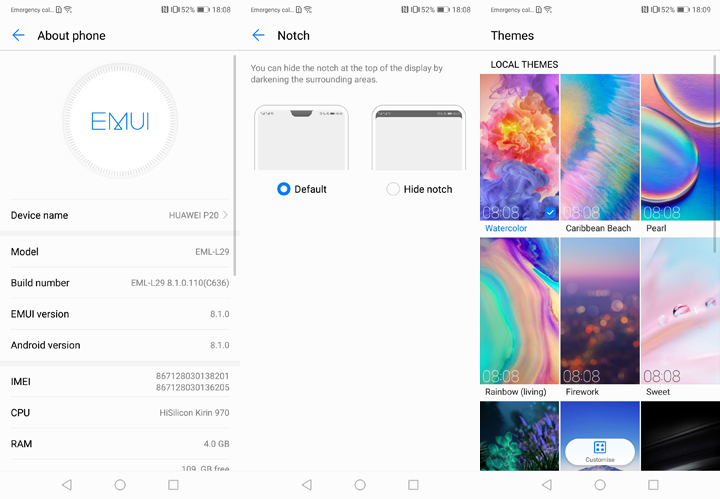
The ability to mirror the phone into an external monitor or display (Easy Projection) is also available here and works the same way as it did in the Mate 10/10 Pro. All you need is either a Type-C to HDMI cable.
EMUI might look simple and unappealing but its core strength is the ability to give users all the possible options that fit their needs. It’s flexible and highly customizable. You just need to tinker around to get the hang of it.
The P20 is powered by the same HiSilicon Kirin 970 first introduced in the Huawei Mate 10 and Mate 10 Pro. This is composed of a high-performance, quad-core ARM Cortex A73 processor running at a max speed of 2.36GHz and a power-efficient quad-core ARM Cortex A53 running at 1.8GHz.
This is paired with a Mali G72-MP12 graphics processor and a dedicated Neural Processing Unit that handles AI-specific computational tasks.
Standard memory option is 4GB of RAM and 128GB UFS 2.1 internal storage. Huawei intentionally skipped the microSD card slot.
The Huawei P20 scored a high of 207,349 points in Antutu benchmark.
As demonstrated in the Huawei Mate 10 and Mate 10 Pro, the Kirin 970 is a very powerful and intelligent chipset yet power-efficient at the same time. We’ve never had any experience that suggests otherwise.
AnTuTu v 7.07 Benchmark — 207,349
Geekbench 4.2 — 1,887 (Single), 6,678 (Multi)
PCMark — 7,055 (Work 2.0), 8,450 (Work 1.0)
Androbench – 824 MB/s (Sequential Read), 195 MB/s (Sequential Write)
3DMark — 2,642 (Slingshot Extreme Vulcan), 2,976 (Slingshot Extreme OpenGL ES 3.1),
Multi-tasking is a breeze, gaming performance is very good and not once we’ve noticed the device is slowing down or lagging. The internal UFS 2.1 storage scored very high marks in read (824MB/s) and write speeds (195MB/s).
Call quality is excellent, SMS are sent/received quickly with very strong cellular reception. The phone supports 2 nano-SIM cards, both of which are LTE capable. Other connectivity options include dual-band WiFi, Bluetooth 4.2, NFC and GPS.

The Huawei P20 packs a decent 3,400mAh Li-Ion battery that supports Huawei SuperCharge can go from zero to full in just 60-70 minutes. Sadly, there’s no wireless charging support on the device.
In our PC Mark Battery Test, the P20 clocked in at 8 hours and 49 minutes at 50% brightness, zero volume and in airplane mode.

Using our standard video loop test, the P20 managed to last 14 hours and 30 minutes playing a full HD video at 50% brightness, zero volume and in airplane mode.
These results are significantly better than many other smartphones we’ve tested before under the same conditions.

The charger that came with the box is the standard Huawei SuperCharge switching power adapter that has an output of 5A (4.5V) or 4.5A (5V).
Huawei has made some pretty significant improvements on the P20. A more stylish and modern design, impressive performance, improved battery life and a camera system that’s proven and tested.

The P20 is a more polished and modern execution of the Huawei P series but it’s not without any fault. The lack of water-resistance is disappointing, especially that the P20 Pro has it. The absence of wireless charging isn’t a biggie since Huawei SuperCharge is a great fast-charging feature.
Overall, the Huawei P20 is a solid flagship — unique and beautiful in its own way. Huawei has shown it has the chops to consistently produce great flagship-level devices and the P20 is a great example of this.
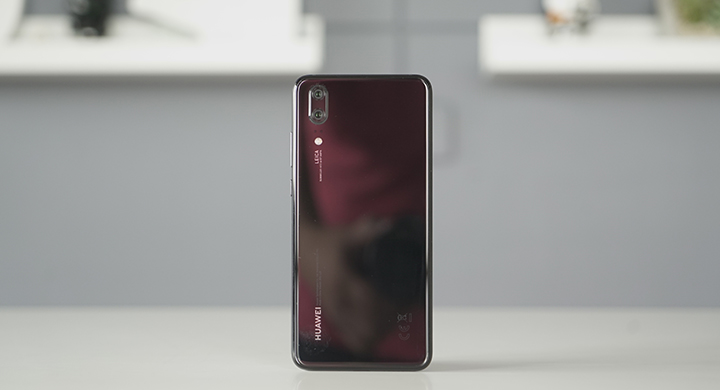
The Huawei P20 is now available in the Philippines with a suggested retail price of Php34,990USD 596INR 50,547EUR 568CNY 4,342 with color options for Twilight, Pink Gold, Black, Midnight Blue, and Champagne Gold.
Huawei P20 specs:
5.8-inch 18.7:9 FHD+ FullView LTPS IPS display @ 2244 x 1080 resolution, 429ppi
3D Glass
Hisilicon Kirin 970 octa-core processor
4 x ARM Cortex A73 2.36GHz + 4 x ARM Cortex A53 1.8GHz + i7 Co-processor
Mali-G72 MP12 767MHz
4GB RAM
128GB internal storage
Mali G72-MP12 GPU
12MP f/1.8 1.55 um + 20MP f/1.6 monochrome lens dual Leica cameras with Huawei AIS, 2x hybrid zoom, w/ LED flash
24MP f/2.0 front camera with AI beautification and 3D portrait lighting
2K and 960fps video recording
AR support
4G LTE Cat. 18 (1.2Gbps)
Single/Dual-SIM
GPS with GPS, GLONASS, BDS, GALILEO
NFC
WiFi 802.11 a/b/g/n/ac, DLNA
USB Type-C
Bluetooth 4.2
IP53 splash resistance
Fingerprint scanner
Android 8.1 Oreo (EMUI 8.1)
3,400mAh battery with SuperCharge and AI battery management
149.1 mm x 70.8 mm x 7.65mm (dimensions)
165 grams (weight)
Twilight, Pink Gold, Black, Midnight Blue, Champagne Gold
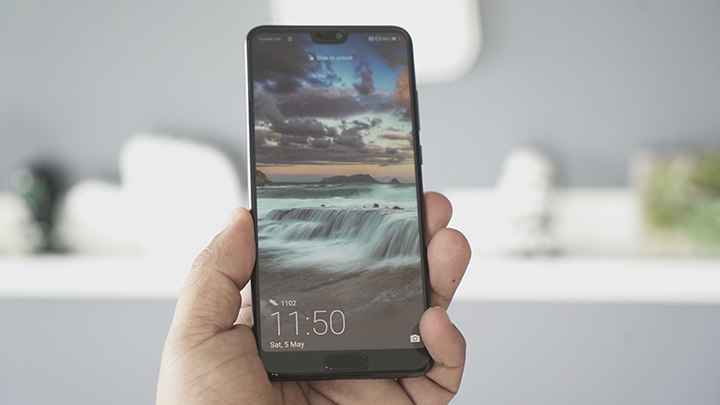
What we like:
* Beautiful design and solid build quality
* Impressive performance
* Great camera
* Good battery life
* Fast charging
* Android Oreo out-of-the-box
What we did not like:
* No water-resistance
* No wireless charging
* No Gorilla Glass protection (?)

YugaTech.com is the largest and longest-running technology site in the Philippines. Originally established in October 2002, the site was transformed into a full-fledged technology platform in 2005.
How to transfer, withdraw money from PayPal to GCash
Prices of Starlink satellite in the Philippines
Install Google GBox to Huawei smartphones
Pag-IBIG MP2 online application
How to check PhilHealth contributions online
How to find your SIM card serial number
Globe, PLDT, Converge, Sky: Unli fiber internet plans compared
10 biggest games in the Google Play Store
LTO periodic medical exam for 10-year licenses
Netflix codes to unlock hidden TV shows, movies
Apple, Asus, Cherry Mobile, Huawei, LG, Nokia, Oppo, Samsung, Sony, Vivo, Xiaomi, Lenovo, Infinix Mobile, Pocophone, Honor, iPhone, OnePlus, Tecno, Realme, HTC, Gionee, Kata, IQ00, Redmi, Razer, CloudFone, Motorola, Panasonic, TCL, Wiko
Best Android smartphones between PHP 20,000 - 25,000
Smartphones under PHP 10,000 in the Philippines
Smartphones under PHP 12K Philippines
Best smartphones for kids under PHP 7,000
Smartphones under PHP 15,000 in the Philippines
Best Android smartphones between PHP 15,000 - 20,000
Smartphones under PHP 20,000 in the Philippines
Most affordable 5G phones in the Philippines under PHP 20K
5G smartphones in the Philippines under PHP 16K
Smartphone pricelist Philippines 2024
Smartphone pricelist Philippines 2023
Smartphone pricelist Philippines 2022
Smartphone pricelist Philippines 2021
Smartphone pricelist Philippines 2020
Mototelic says:
I’ve always liked Huawei, I really did. But having onscreen buttons, with a fingerprint scanner on the chin with a freakin notch?!? You only get to pick one Huawei!! The front is a total mess! The purpose of having a notch is to avoid bezels! Take a hint from ASUS or Vivo will you?!
Jude says:
P20 camera was tested by DXOMARK with an over all score of 102. 107 for still images and 97 for videos, It is a bit higher than the overall score of 99 for Samsung galaxy S9+. P20 pro’s overall score is 107, if you ask. That is now making huawei ahead of its competitors in camera department.